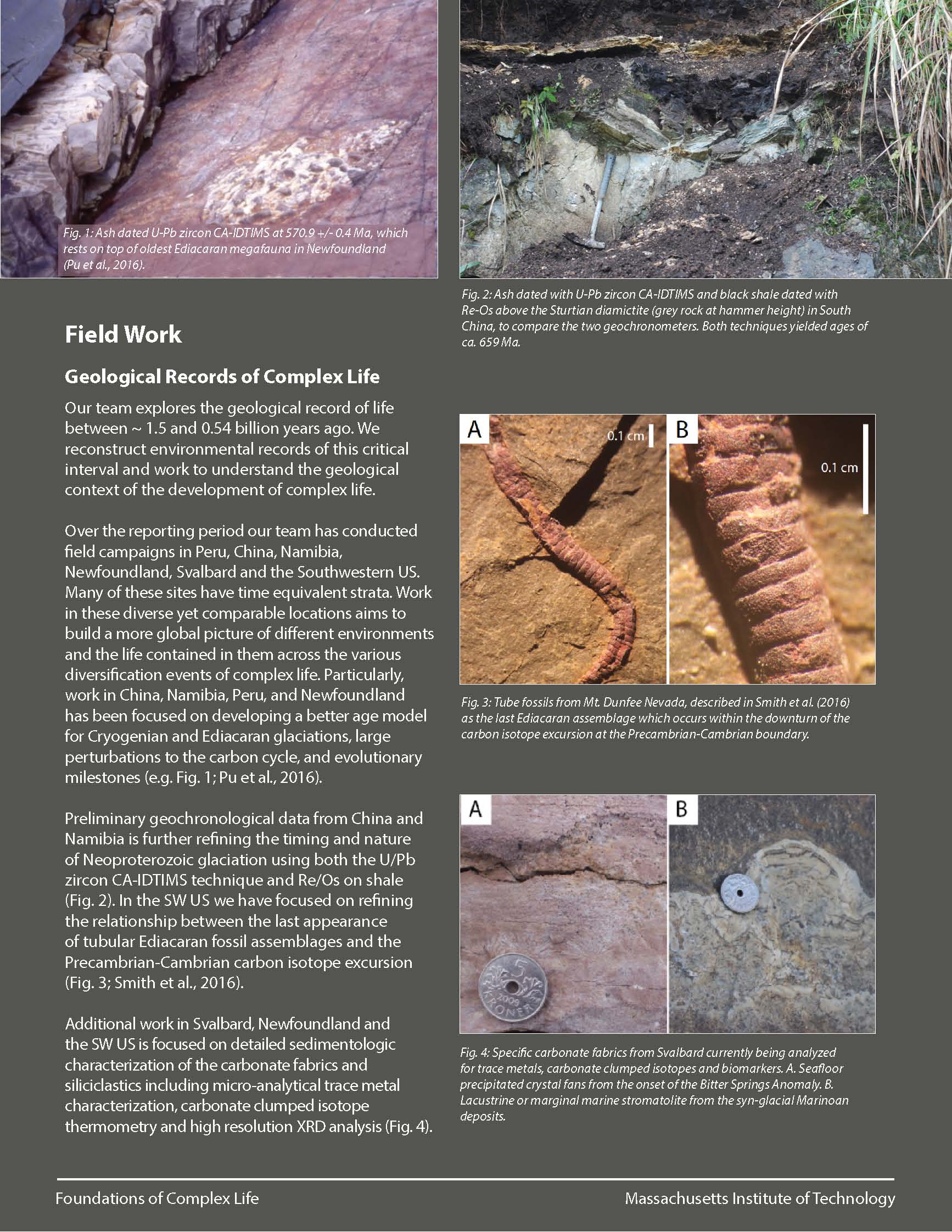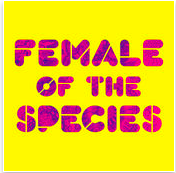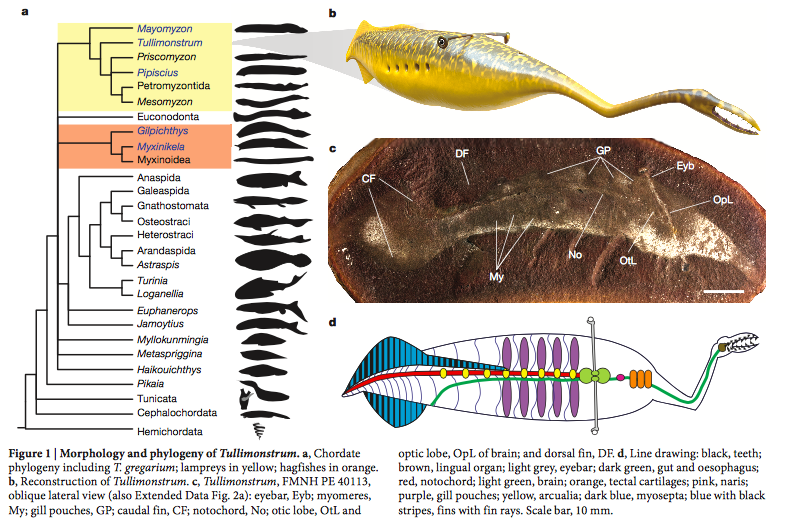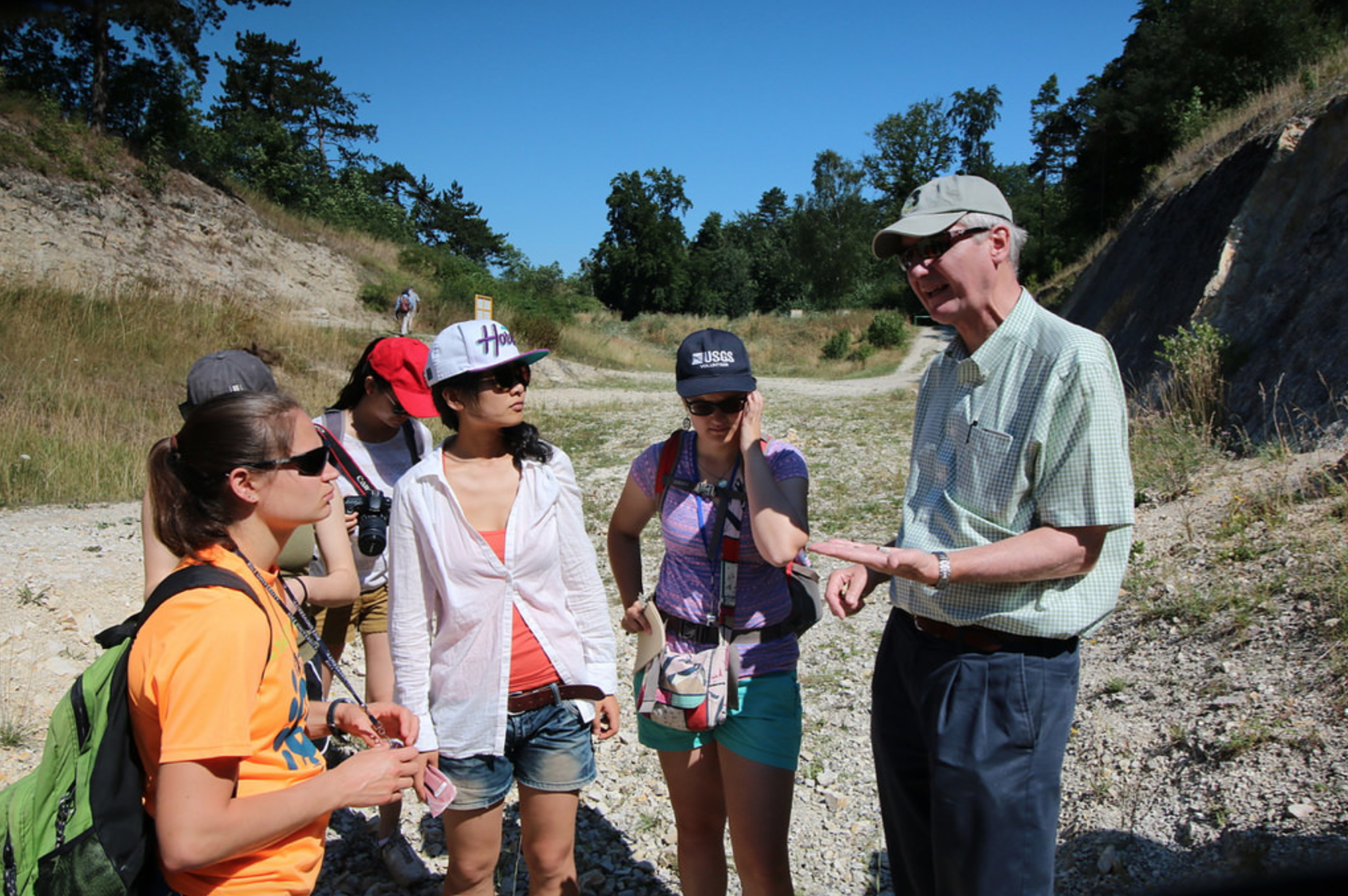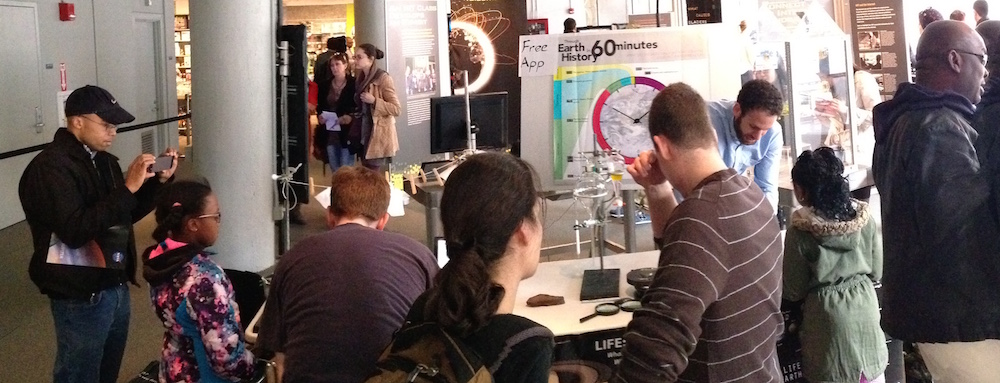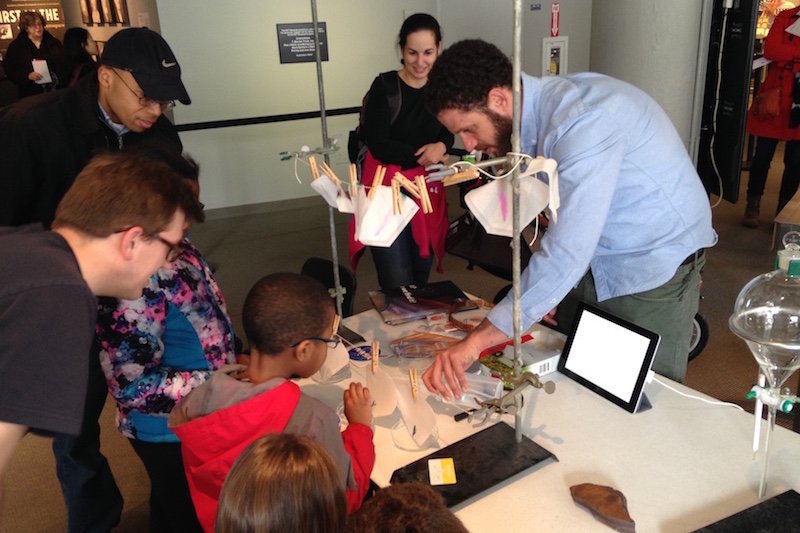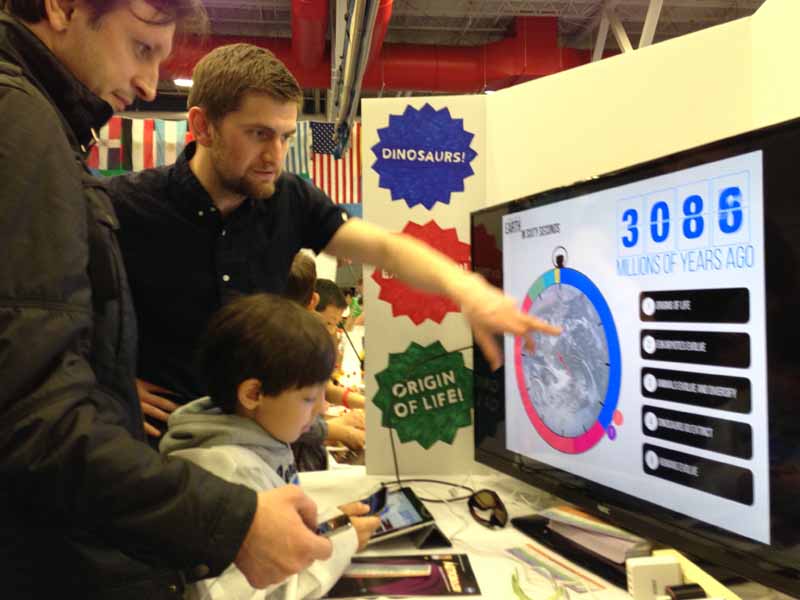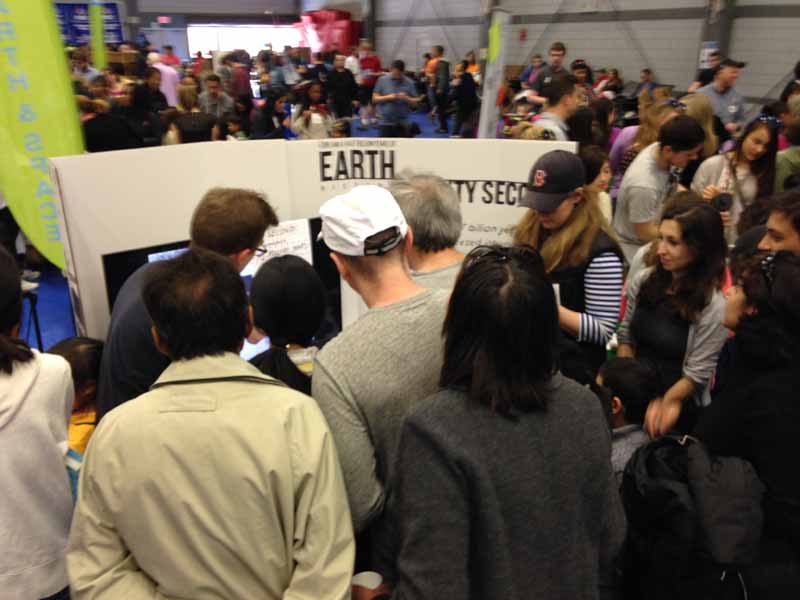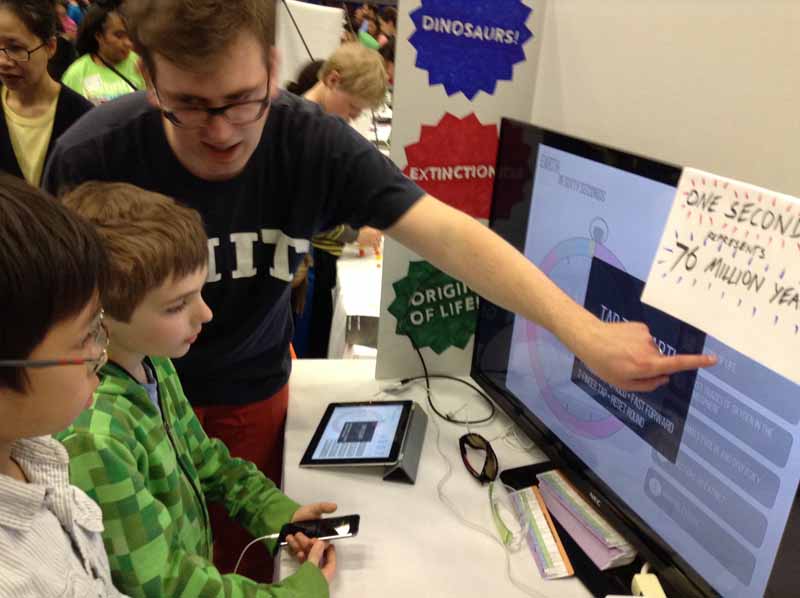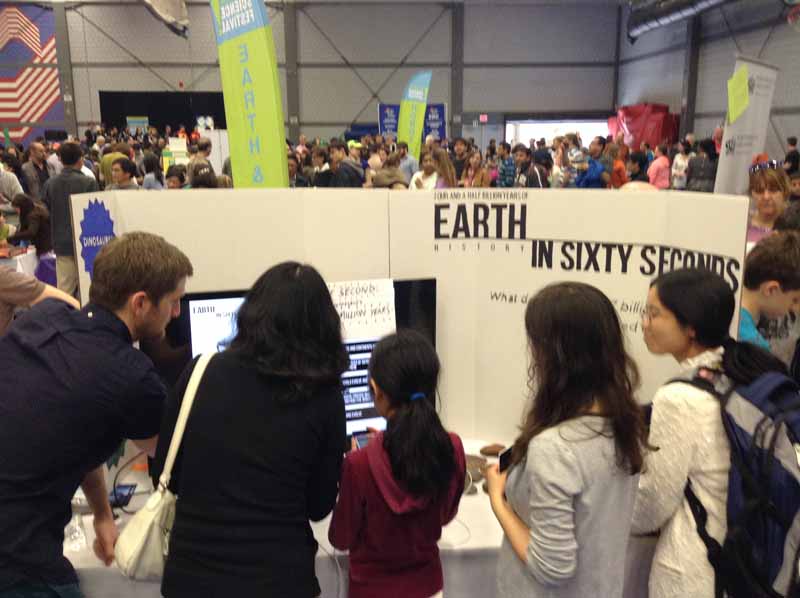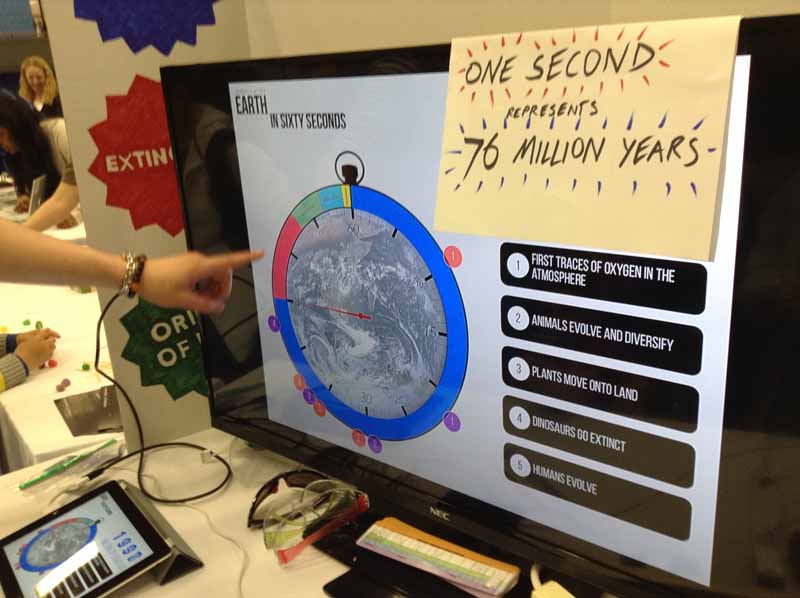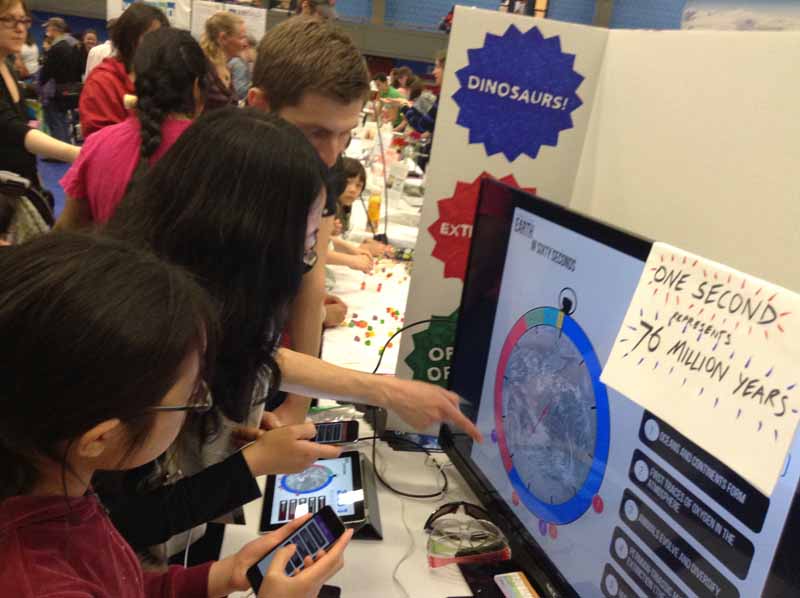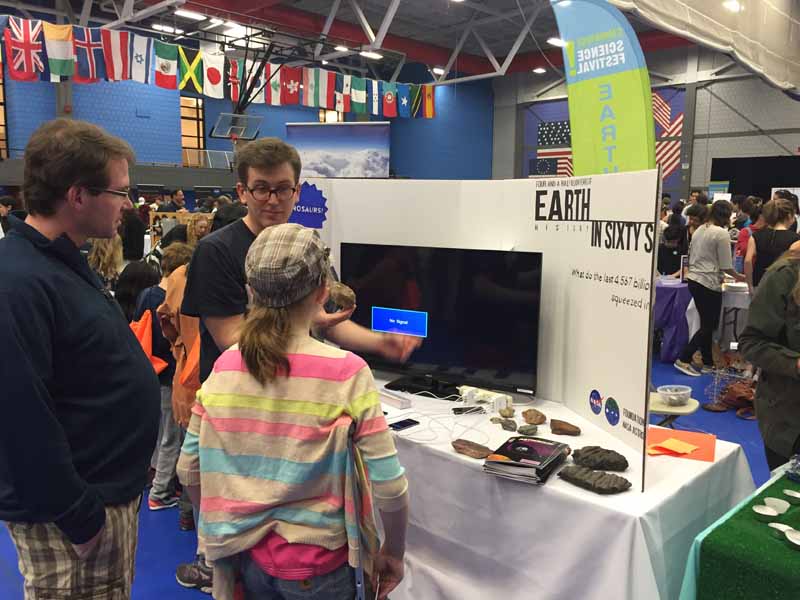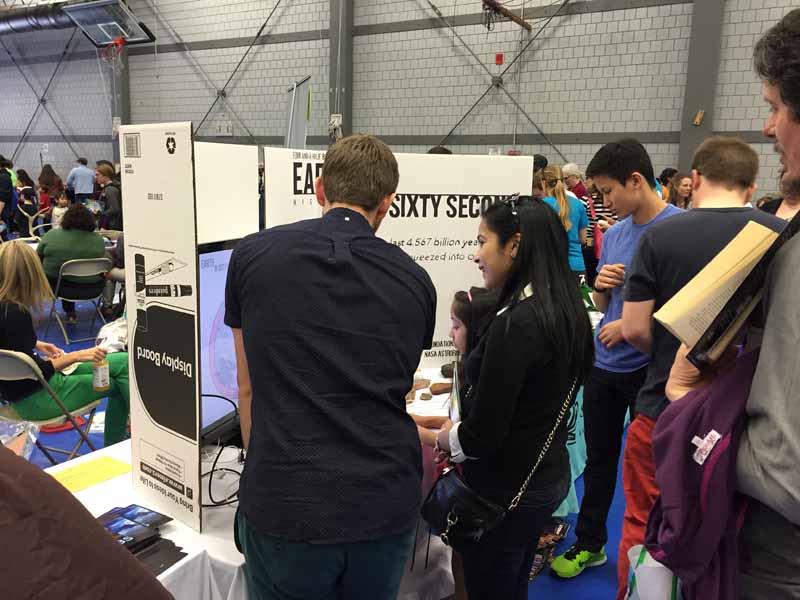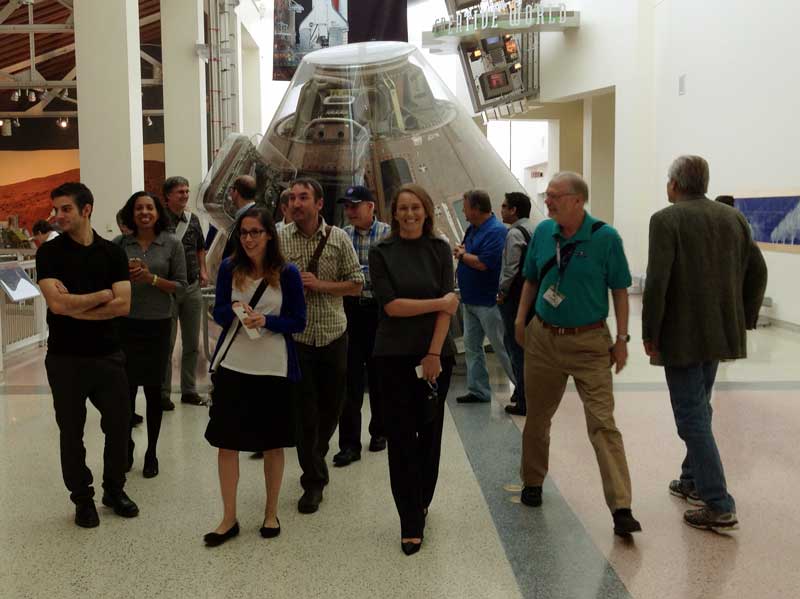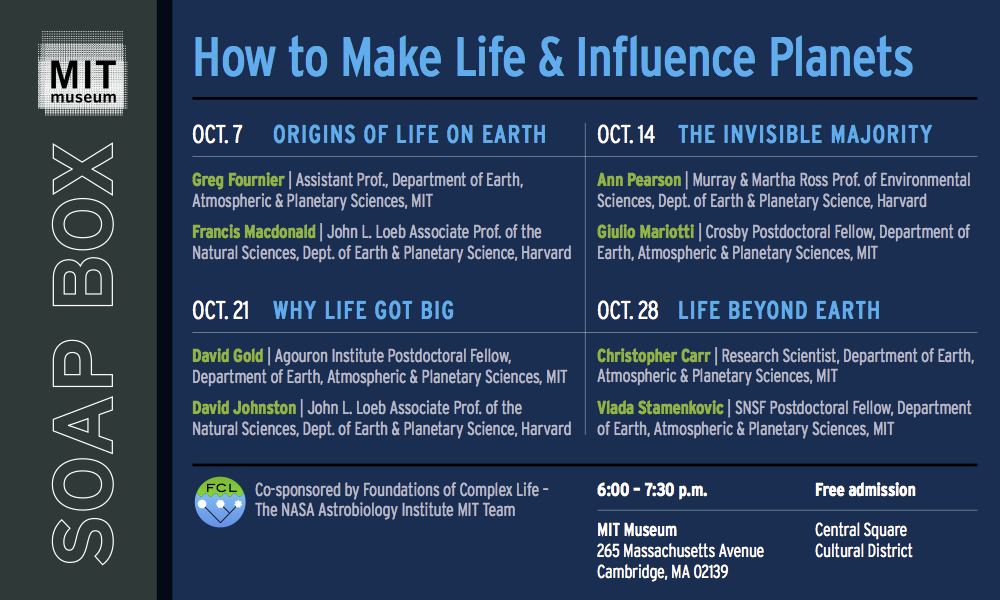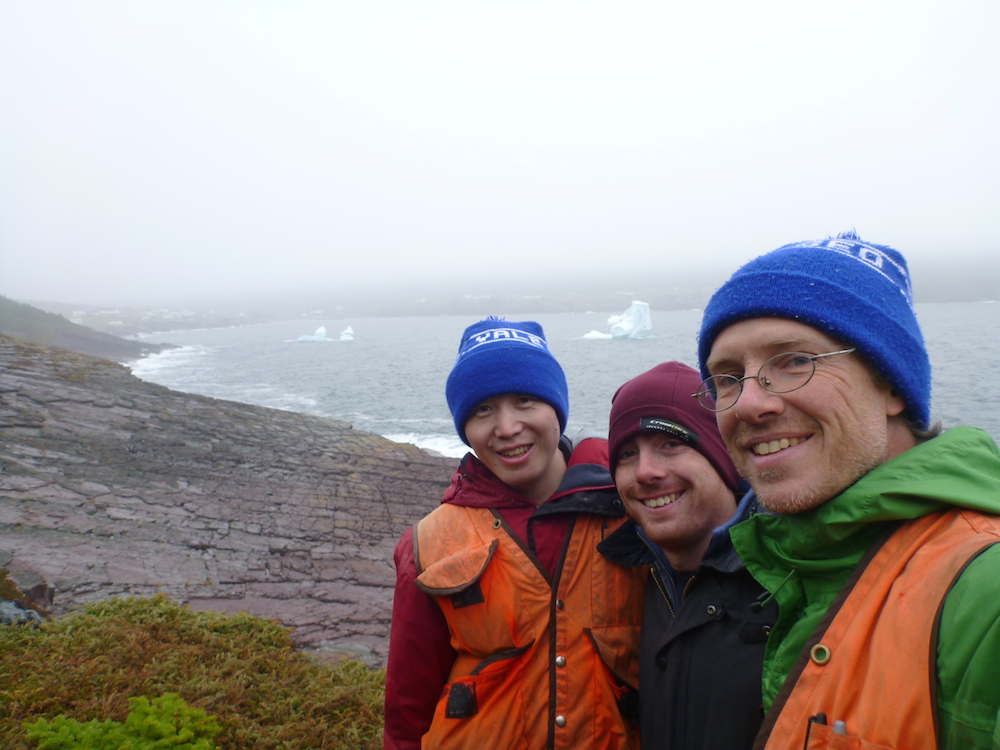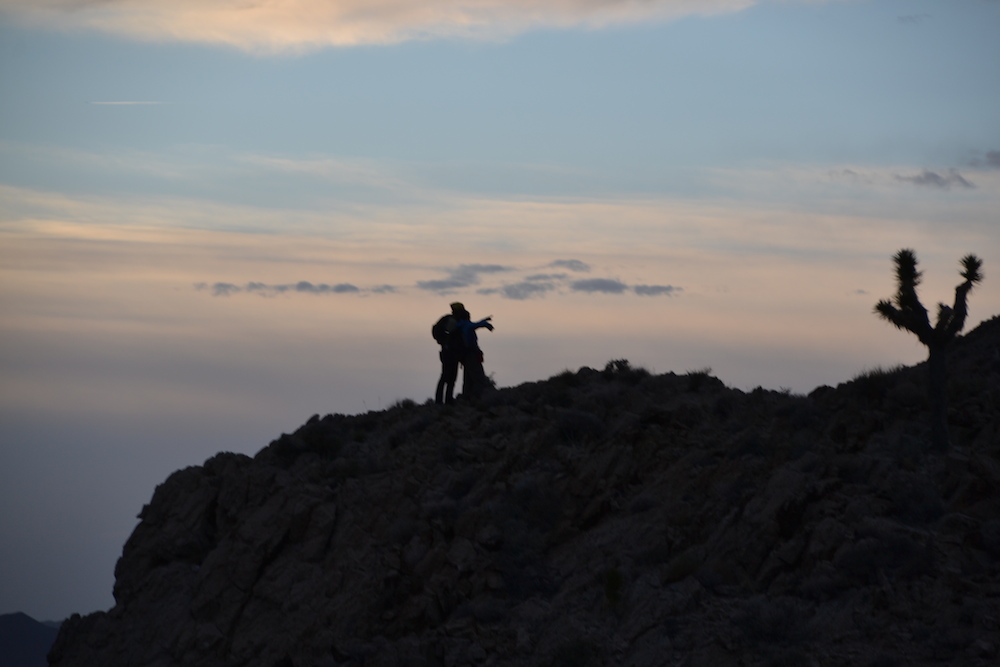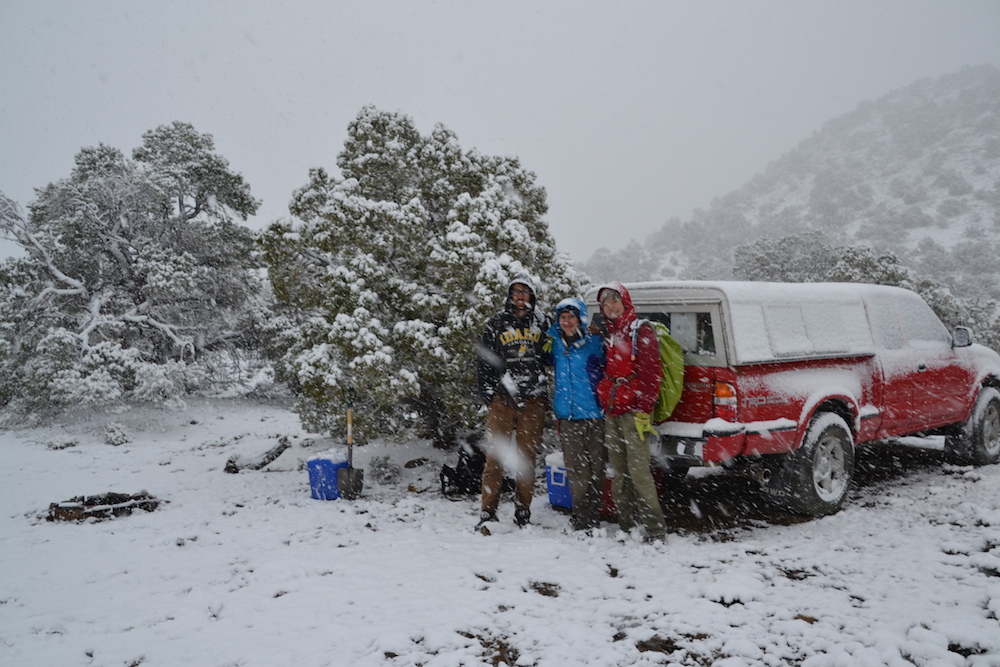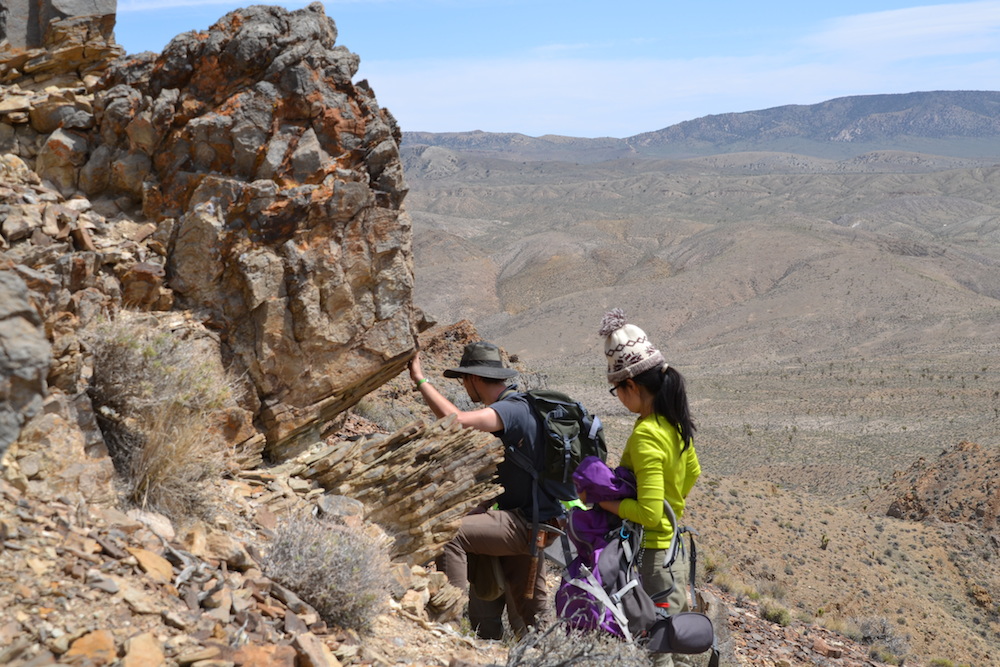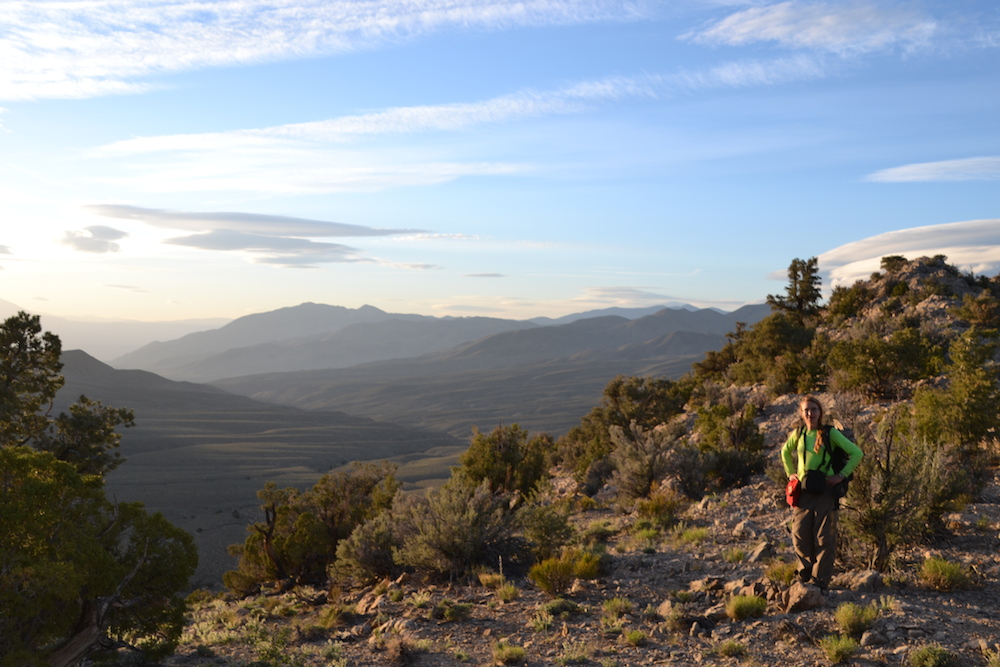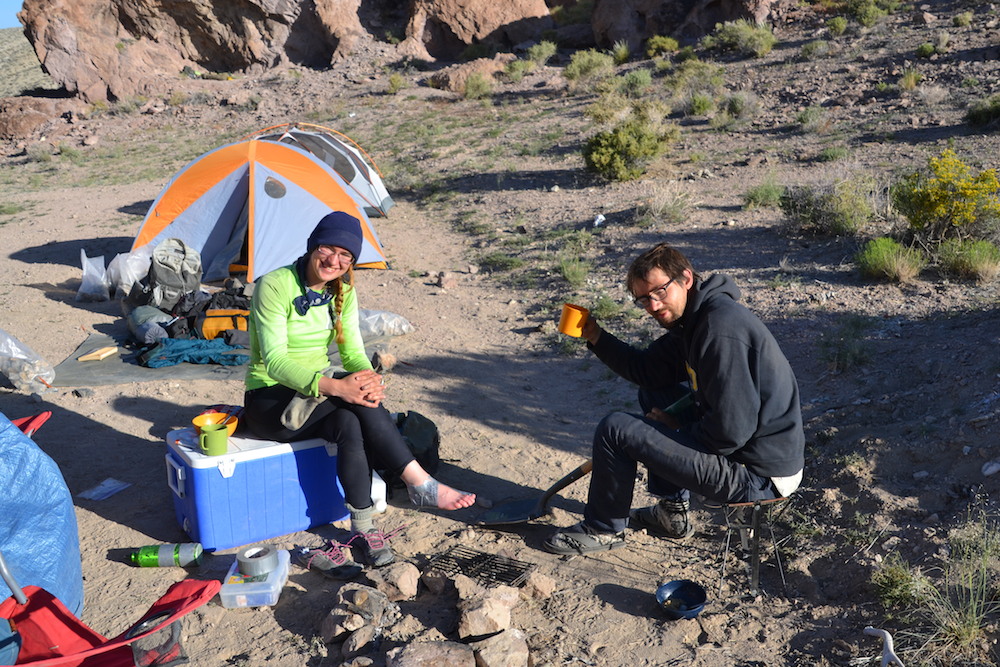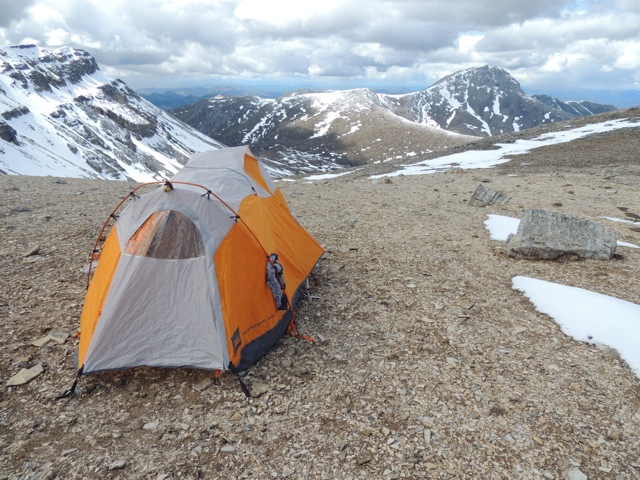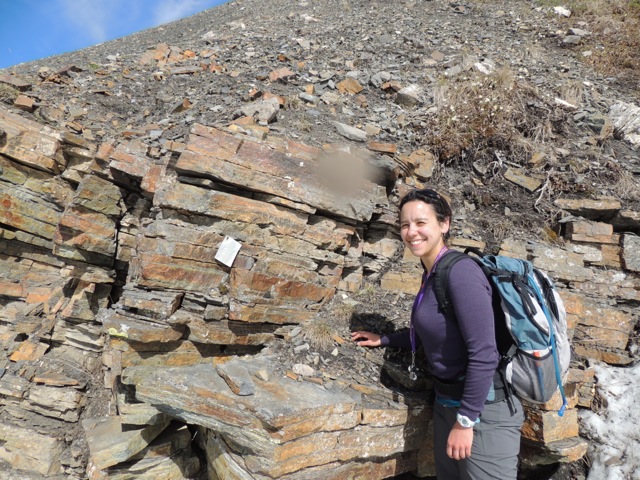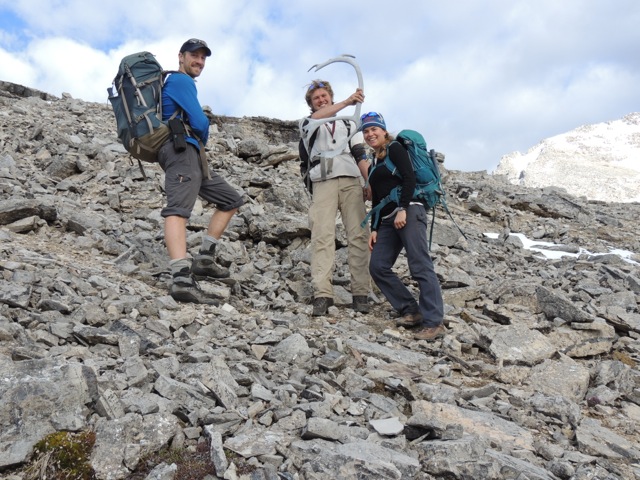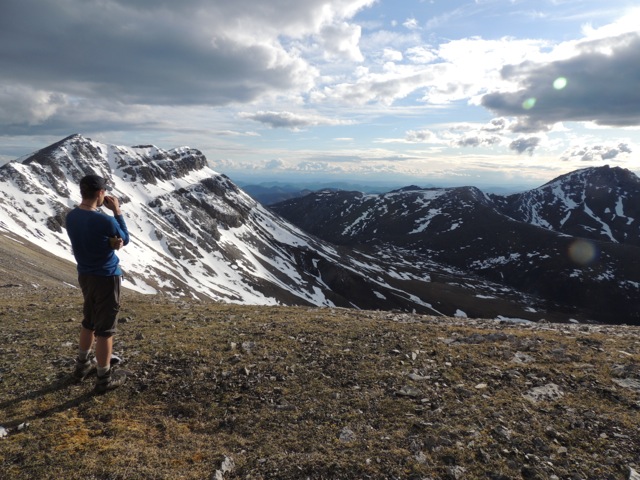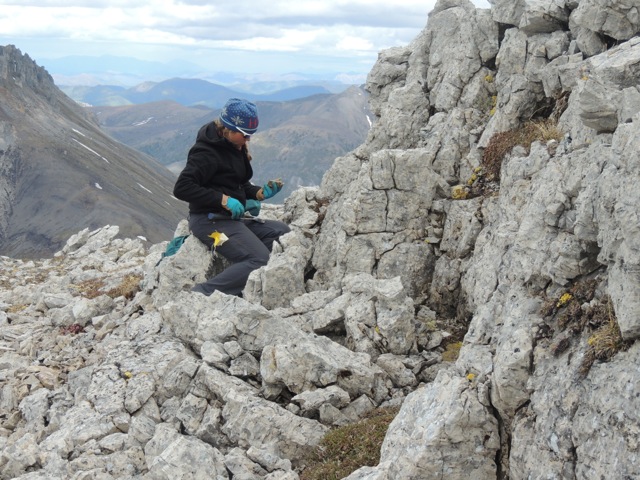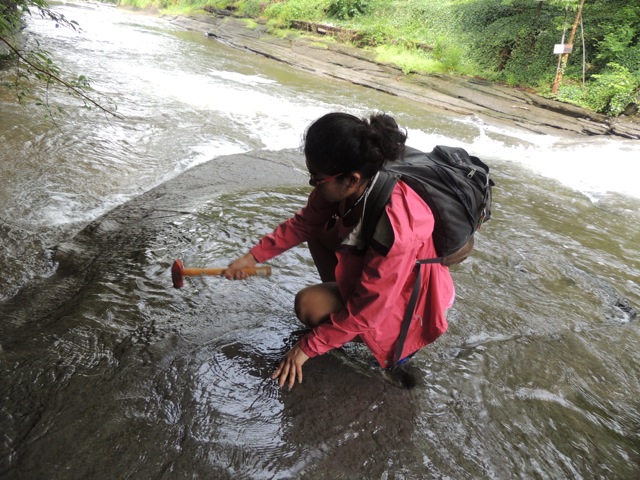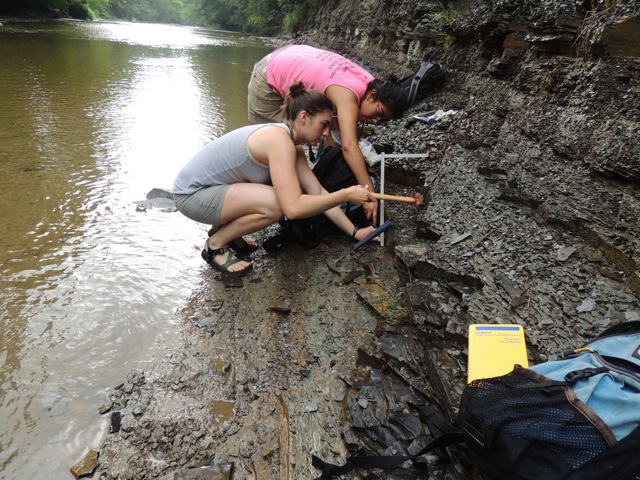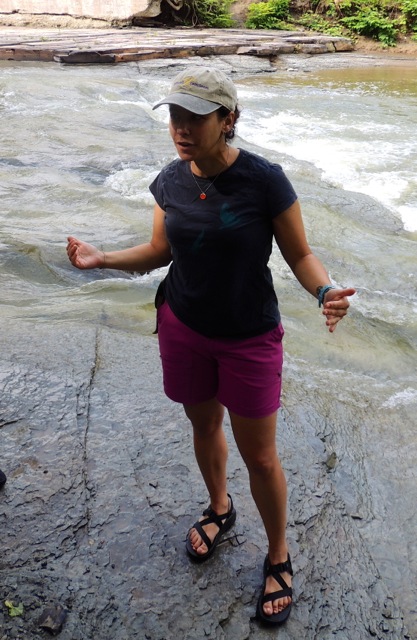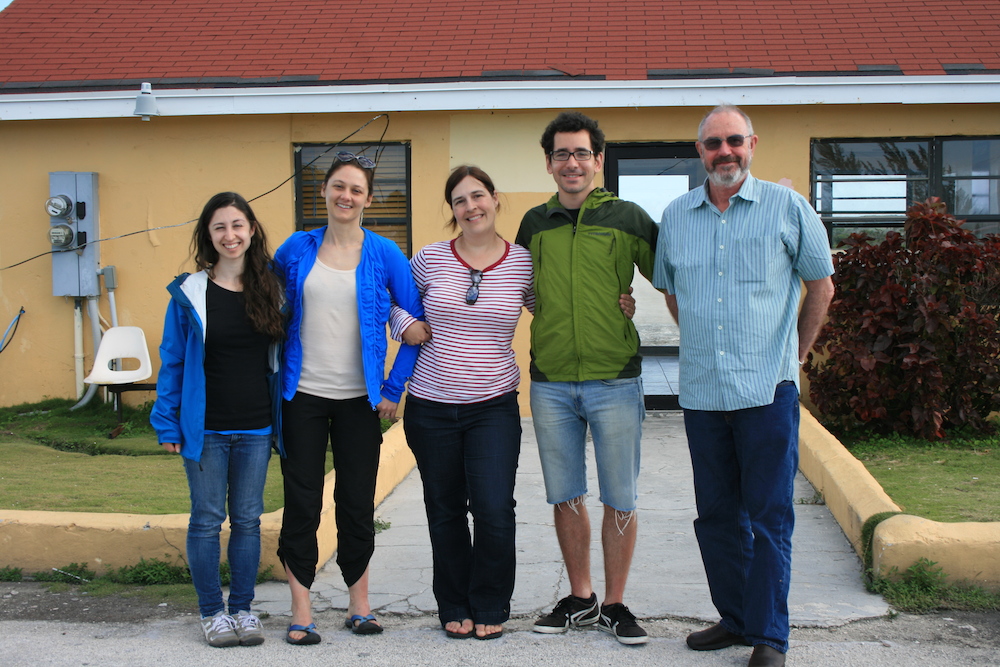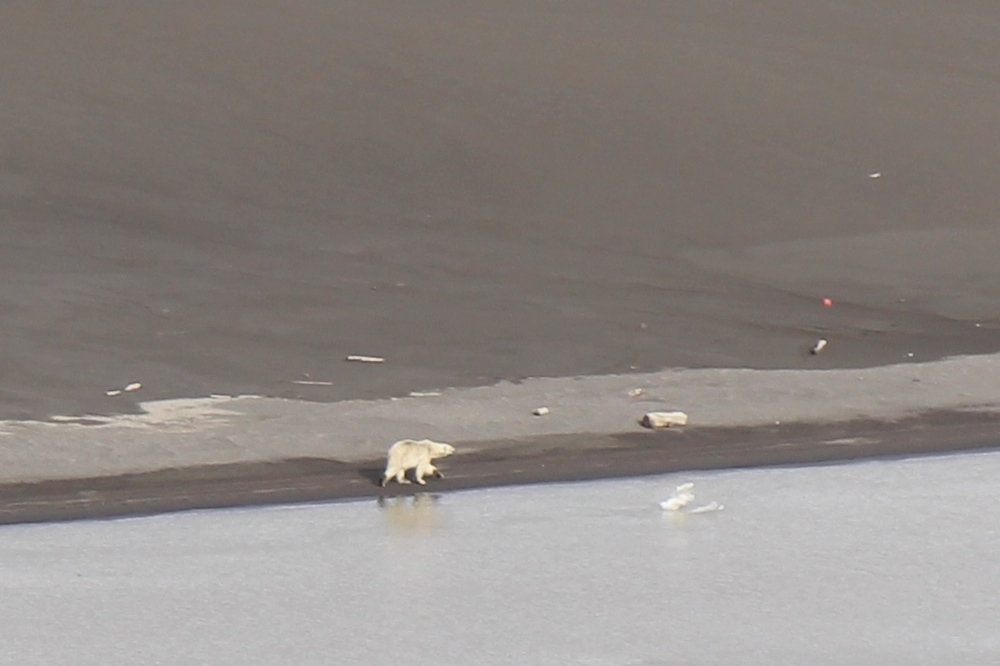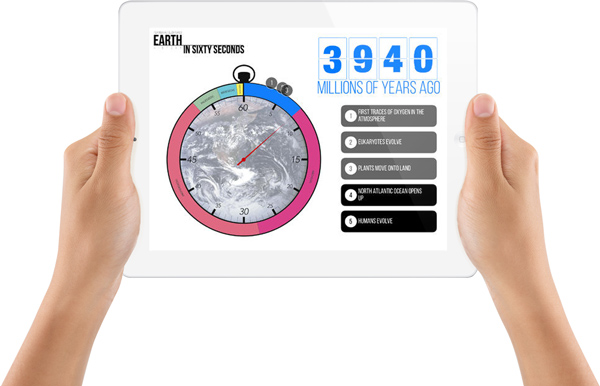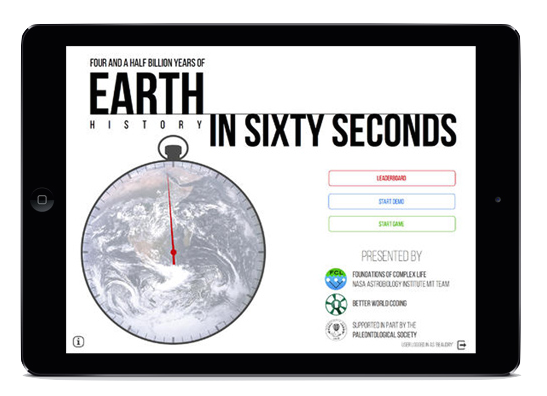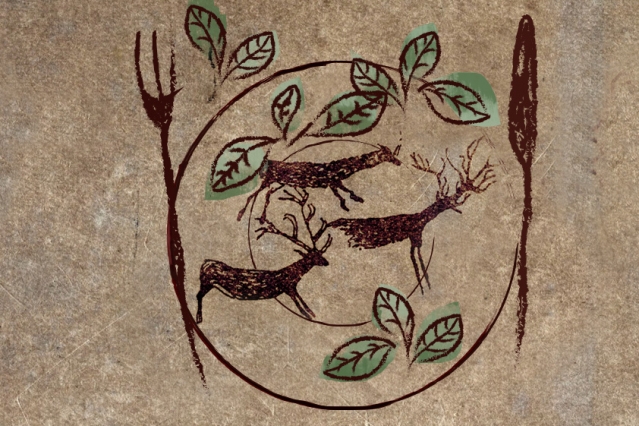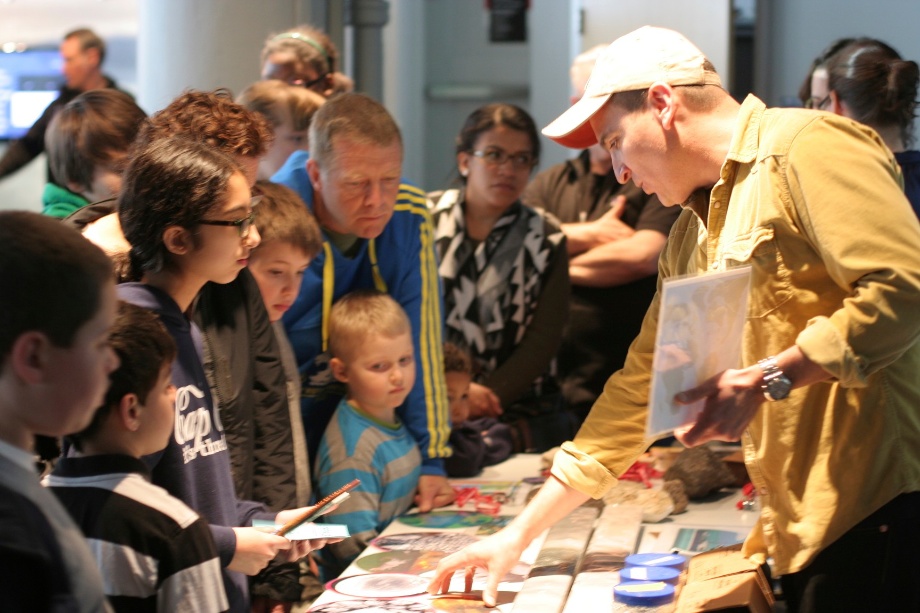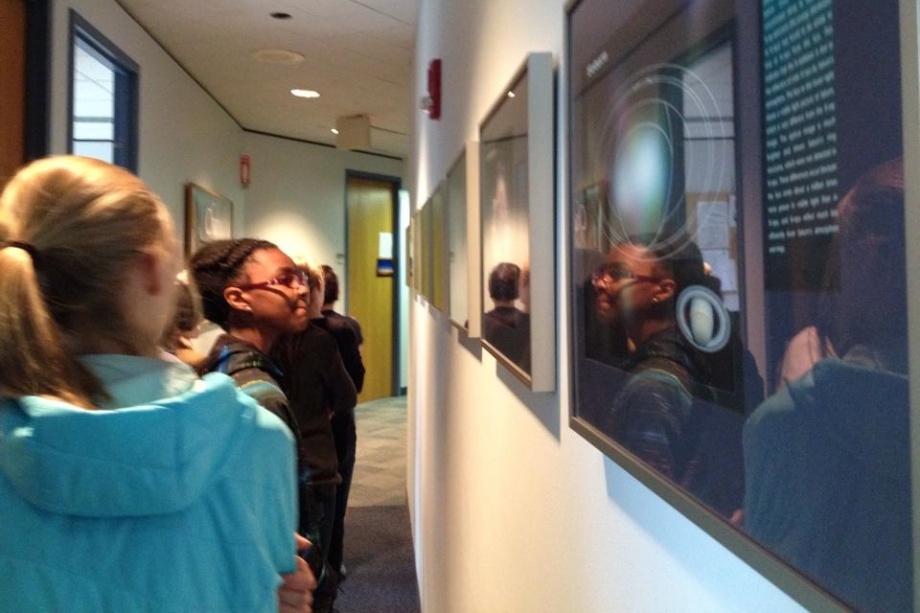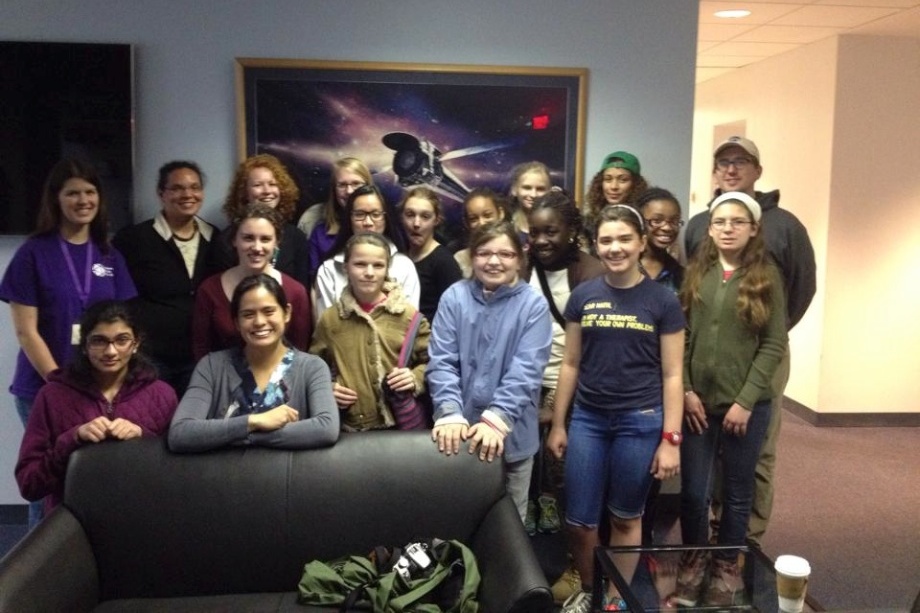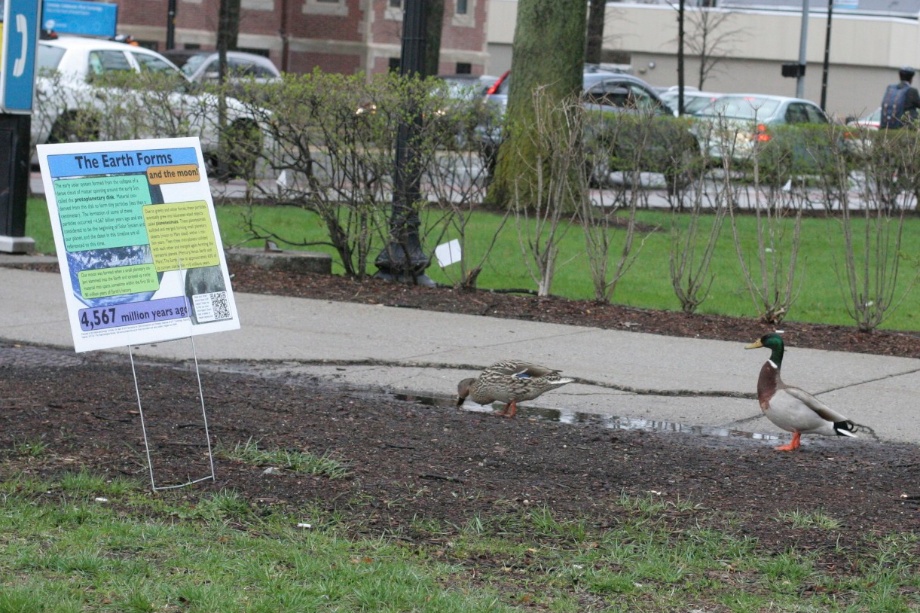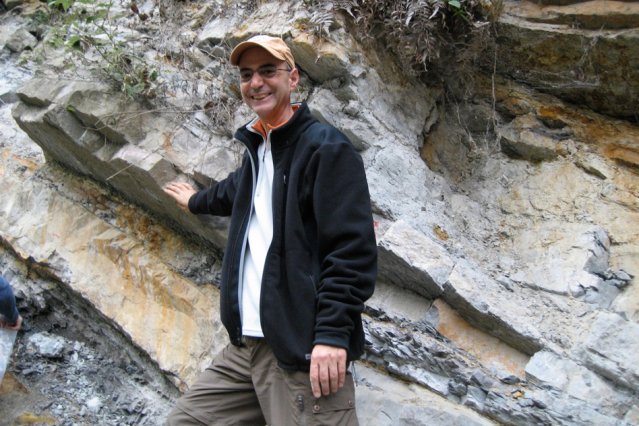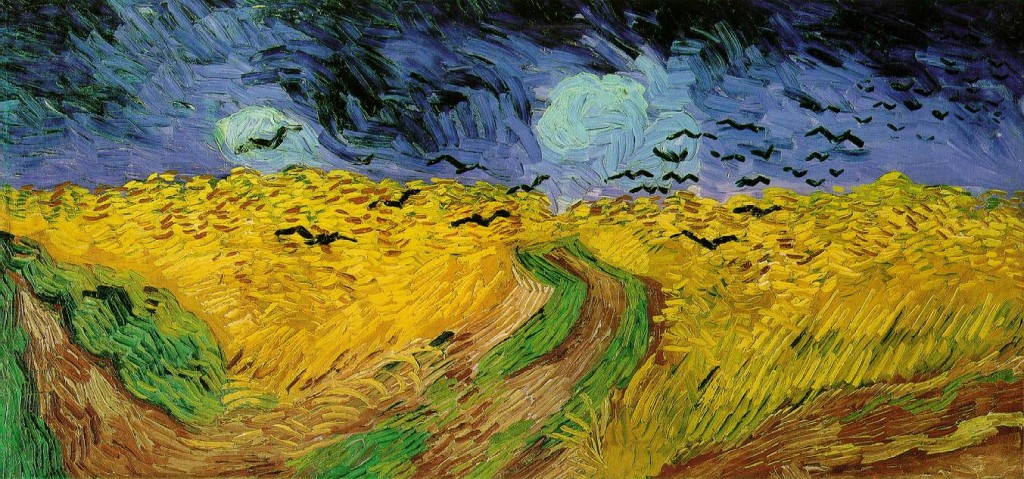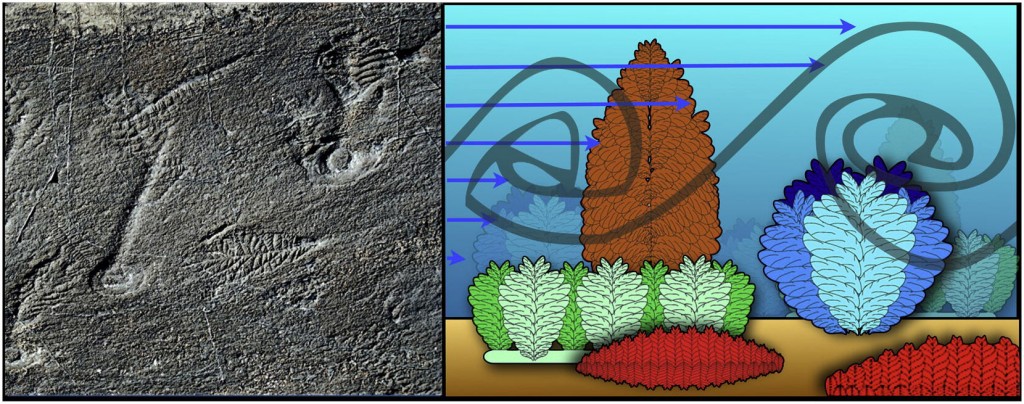Field work exploring the geological records of complex life
APRIL 4, 2017
New Paper in Nature from the Summons Lab
MARCH 17, 2017
David Gold, a post-doc in the Summons lab at MIT, is the lead author of a new paper in Nature –Paleoproterozoic sterol biosynthesis and the rise of oxygen. His findings suggest that eukaryotic organisms were present on Earth as early as 2.31 billion years ago, around the same time that oxygen was first present in the Earth’s atmosphere. This finding significantly pushes back the earliest signs of eukaryotes. Previously, the oldest known eukaryotes were algae-like fossils from 1.56 billion years ago.
David and his co-authors arrived at this conclusion by doing a molecular clock analysis of the genes associated with sterol biosynthesis. They constrained their molecular clock with fossil evidence and used multiple molecular clock analyses. These analyses constrained the evolution of sterol biosynthesis to approximately 2.31 billion years ago. Complex sterols are unique to eukaryotes and producing them is an oxygen-intensive process. Therefore, these biomarkers are evidence of both eukaryotic life and an oxygenated atmosphere. Previously, it appeared that the evolution of sterol biosynthesis lagged behind the oxygenation of the atmosphere. However, this study suggests that this evolutionary event is tied to the availability of oxygen in the atmosphere.
One great podcast
DECEMBER 1, 2016
Phoebe Cohen (Williams) recently started an excellent new podcast “Female of the Species.” It is a podcast about “the sisterhood of science. A healthy mix of issues facing women in STEM, good solid chit chat, and belly laughs.” It is an absolutely wonderful podcast and I suggest checking it out!
The ‘Tully monster’ is a vertebrate
MARCH 20, 2016
The Briggs lab dug into a nearly 50-year old mystery when they began investigating the Tully monster (Tullimonstrum gregarium) – an animal found in 300 million year old coal deposits in northeastern Illinois. This oddly-shaped animal was an enigma because it could not be assigned to a phylum. The team studied nearly 2,000 fossils over the course of their study and concluded that The “Tully Monster” is a Vertebrate.
New paper in Nature Geoscience from the Briggs Lab
OCTOBER 1, 2015
Lidya Tarhan, a post-doc in the Briggs lab at Yale, is first author of a new paper published in Nature Geoscience – Protracted Development of bioturbation through the early Plaeozoic Era. This work from Lidya, members of the Briggs Lab, and collaborators, indicates that marine animals took significantly longer than previously thought to commence major bioturbation (burrowing and mixing) of marine surface sediments. Rather than the Cambrian (541 Ma) as previously thought, they propose that this happened much later during the Silurian (~420 Ma). This has potentially broad implications sulfate and oxygen levels in the oceans during this time, for the our understanding of Earth’s ancient ecosystems.
Here is a link to a news story titled ‘Ancient dirt churners took their time stirring up the ocean floor’
Yale Geology field trip to the Alps
SEPTEMBER 26, 2015
The Briggs Lab took part in the Yale department field trip this August. The trip involved a performing a transect across the Alps and Apennines from Frankfurt, Germany to Assisi, Italy.
The Briggs lab group in the Hauff museum, Holzmaden, Germany. In the background is a fossilised log with crinoids attached from the Jurassic Posidonia Shale.
For over two weeks in August, 23 students and faculty travelled about 3000 km and covered the amazing sedimentary record preserved between the mountains belts between Germany, Switzerland and Italy.
Derek and students in discussion on an outcrop during the field trip
Here’s a link to an article about the trip. Make sure to check out loads more photos of the trip on Flickr!
New research from the Briggs Lab reporting on the oldest Eurypterids
SEPTEMBER 26, 2015
New research from the Briggs Lab reporting on the oldest known eurypterid fossils from Iowa was recently published in BMC Evolutionary Biology. Eurypterids were large aquatic arthropods, that are ancestors to modern spiders and lobsters, for example. This new species, called Pentecopterus, lived about 467 Ma, during the Ordovician. Despite the age of this fossil, remarkable preservation was observed. Here is a link to some other media coverage. This research involved collaboration between Yale and the University of Iowa.
Earlier in August, the Briggs Lab published a paper in Biology Letters titled ‘All the better to see you with‘ reporting on the visual system of the eurypterids and the divergent ecological roles between a number of these species. This was a follow-up paper to ‘What big eyes you have‘, published last year. Looking forward to the next paper!
Investigating the preservation of ancient organic microfossils
SEPTEMBER 26, 2015
This photo from Ross shows the range of samples he is analyzing and how he prepares them to be ready for X-ray diffraction analysis
Briggs Lab graduate student Ross Anderson has been working in the Tosca Lab in Oxford recently. He has been using using X-ray diffraction to study clay minerals from Neoproterozoic fossils of exceptional organic preservation (called ‘lagerstatten’). His goal is to try to understand the processes and mechanisms of organic microfossil preservation and to reconstruct the biology, and environmental conditions and perturbations of the Neoproterozoic.
Outreach at the 2015 Cambridge Science Festival
MAY 8, 2015
Members of the Summons Lab represented Foundations of Complex Life in force again at this year’s Cambridge Science Festival. We brought our research to the general public at two of the countless events during the festival, the “Science Carnival and Robot Zoo” held during the first Saturday of the festival, and “Soaring into Sky and Space” at the MIT Museum during the second Saturday. Turnout for both events was excellent—with a constant stream of curious minds, young and old, piling up several faces deep at our booths for the duration of each event.
Scenes from FCL’s booth at the MIT Museum for the “Soaring into Sky and Space” event. First three photos courtesy of the MIT Museum.
Coffee filters were among the most popular parts of our booth at the MIT Museum. Why coffee filters, you ask? Well, our booth featured many of the physical objects of our research, from the rocks we collect in the field and the hammers we use to collect them, to the glassware and pieces of analytical instruments we use to extract and identify organic chemicals within those rocks. An important part of the process from rocks to chemicals is chromatography, the separation of chemical compounds. To illustrate this process, we gave visitors to our booth the chance to do a quick, hands-on chromatography experiment themselves, separating the pigments in an ink marker using a coffee filter and few drops of water. The demonstration was a hit, and it was a pleasure to see so many delighted “aha” expressions on the faces of both children and their parents over the course of the day.
At the “Science Carnival and Robot Zoo”, we debuted a multiplayer version of our successful iPad game “Earth in Sixty Seconds”. The game compresses four and a half billion years of Earth history into a single minute, letting players become high-speed time travelers and race through the geologic ages at breakneck speed. Using iPod touch controllers, player guessed the timing of key events in the history of our planet, and the life that evolved on it. When did life originate? When did dinosaurs go extinct, and humans evolve? Although many visitors to our booth had an inkling that human history occupied a short time at the end of our countdown (much, much less that one second!), many were surprised at how recently animals (just the last seven seconds) and even oxygen in the atmosphere (only the second half of the minute) appeared in our planet’s history.
NAI Executive Council Meets in LA
NOVEMBER 24, 2014
Attendees of the Executive Council meeting in front of the Gemini 11 space capsule at the California Science Center.
Foundations of Complex Life principal investigator Roger Summons joined the PIs of the other NAI Teams, including the new teams selected during the CAN7 competition, for an in-person meeting hosted by the USC team in Los Angeles last week. As a part of the onboarding process for the new teams, each team gave a brief overview and introduction to their research. You can download and view the MIT Team’s presentation here.
After the business portion of the meeting, attendees got to visit some of the research facilities at USC, including some very impressive prototypes of instrumentation under development for the planned Mars 2020 rover mission. The meeting concluded with a visit to the California Science Center, where the Space Shuttle Endeavour has its retirement home.
Public Outreach in October: Astrobiology Soap Box Series at the MIT Museum
SEPTEMBER 23, 2014
We are very pleased to announce an interactive public discussion series at the MIT Museum every Tuesday evening this October, showcasing research under the Foundations of Complex Life umbrella. The Soap Box series—in which participants of all backgrounds converse with researchers in a café-style setting—is entitled “How to Make Life and Influence Planets.” Topics will span from the origins of life on Earth to the search for life beyond Earth. Six of the eight speakers are Foundations of Complex Life team members: Greg Fournier, Francis Macdonald, David Gold, David Johnston, Ann Pearson, and Giulio Mariotti.
The MIT Museum has more information about the Soap Box series on their website. The discussions will be video recorded and will be archived on MIT World, accessible here. Many thanks to the EAPS department at MITfor supporting this series, and to the Public Programs staff at the MIT Museum for making this series possible. Please join us Tuesdays in October!
Postcards from the Field
JULY 29, 2014
Each year, many Foundations of Complex Life team members head out to the field to sample the archives of Earth’s history contained in the rock record—and to understand processes operating today—often in spectacular and remote locations. This year, we’ve invited our team members to send some snapshots of their field sites, which include Mongolia, Newfoundland, Death Valley, and the Yukon.
Ross Anderson, a graduate student in Derek Briggs group, sends these two photos:
This photo is from the Zavkhan terrane, southwestern Mongolia. We were in Mongolia to investigate the taphonomy of eukaryotic microfossils between Cryogenian ice ages. In particular we were sampling stratigraphic sections of carbonates, shales, and cherts to document a combined record of clay mineral assemblages and fossil occurrences. Clay minerals are though to affect organic fossil preservation.
This one is from the Bonavista Peninsula, Newfoundland, Canada. I was here along with David Evans (Yale University) and Bin Wen (Nanjing University) to investigate Ediacaran motion of the Avalon microcontinent using paleomagnetism prior to and during the rise of the Ediacaran fauna. The photo is courtesy of David Evans.
Francis Macdonald sends this photo from Mongolia:
A trench that Ross Anderson dug in organic-rich shales in the post-Sturtian deglacial transgression.
Emmy Smith, a graduate student in Francis Macdonald’s group, sends photos from recent field work in Death Valley and California:
Mapping near Gold Point, NV
Hit by a snow storm in the White Mountains in Coyote Canyon, CA.
Blake and Frances looking at late Ediacaran to early Cambrian stromatolite reefs near Mt. Dunfee, NV.
Athena hiking at Hines Ridge in the White Mountains, CA.
Camp near Gold Point, NV.
Phoebe Cohen sends these snapshots of a field season in the Neoproterozoic of the Yukon, together with Justin Strauss (a graduate student in Francis Macdonald’s group) and others, as well as from the end-Devonian of Western NY:
Home sweet home.
Base of the section!
Justin, Lyle, and Laura goofing off after a long day of sampling.
Justin Strauss gazing over Mount Slipper.
Laura sampling Mount Slipper.
Kelly sampling the end-Devonian mass extinction.
Mary and Kelly sampling the end-Devonian mass extinction.
Phoebe explaining something about the end-Devonian mass extinction.
Sara Pruss sends this photo of “Team Ooid” from the Bahamas:
Here is “Team Ooid” getting ready to catch an airplane home after many successful days examining the distribution of ooids on Cat Island in the Bahamas (from left to right: Sharon Newman, Tanja Bosak, Sara Pruss, Giulio Mariotti, and Roger Summons). As a combined unit, we are examining the geomorphological conditions that must be met to form ooids, the (possible) microbial diversity of ooids, and their distribution along Cat Island to understand something about the precursor conditions that lead to ooid formation.
Kristin Bergmann (Harvard), JC Creveling (Caltech) and Jonathon Cooper (Carleton College) send pictures from their fieldwork examining the Neoproterozoic record of Svalbard. They saw a polar bear while working one day and soaked in the stunning landscape.
Introducing Our Brand New iPad App, “Earth in 60 Seconds”
JULY 2, 2014
We are excited to announce the release of our brand new educational game for the iPad, available immediately—for free—in the iTunes App Store. The game is targeted to anyone with an interest in our planet’s history, and the evolution of life upon it, across age brackets. Developed in partnership with Better World Coding and supported in part by an Education and Outreach Grant from the Paleontological Society, the game compresses 4.6 billion years of Earth history into a single minute, challenging players to identify when major events (like the rise of oxygen, the evolution of animals, or the extinction of dinosaurs) happened. Players can compete against each other for the best score and follow links to learn more about each event.
We developed this game, which grew out of our hands-on outreach activities with the Cambridge Science Festival’s Science on the Street and our annual to-scale geologic timeline installation, with classroom use in mind. The Next Generation Science Standards include geological time and Earth history (MS-ESS1.C: The History of Planet Earth, MS-ESS1-4: Earth’s Place in the Universe). With more than 8 million iPads in educational institutions around the world, we hope this app will provide an engaging and captivating teaching tool to allow students to test their knowledge, compete with each other, and build their intuition about geologic scales of time.
We have exciting plans up our sleeves to develop this project further, in several directions: more features for the iPad game, and an outreach version for informal science educators to deploy this game as a multiplayer booth for science fairs, museums, festivals, and community outreach. Watch this space!
For questions and feedback, please don’t hesitate to contact Ben Kotrc, FCL’s education and public outreach lead.
Did Neanderthals eat their vegetables?
JUNE 25, 2014
MIT study provides first direct evidence of plants in the Neanderthal diet
Jennifer Chu, MIT News
The popular conception of the Neanderthal as a club-wielding carnivore is, well, rather primitive, according to a new study conducted at MIT. Instead, our prehistoric cousin may have had a more varied diet that, while heavy on meat, also included plant tissues, such as tubers and nuts.
Illustration: Christine Daniloff/MIT
Scientists from MIT and the University of La Laguna in Spain have identified human fecal remains from El Salt, a known site of Neanderthal occupation in southern Spain that dates back 50,000 years. The researchers analyzed each sample for metabolized versions of animal-derived cholesterol, as well as phytosterol, a cholesterol-like compound found in plants. While all samples contained signs of meat consumption, two samples showed traces of plants — the first direct evidence that Neanderthals may have enjoyed an omnivorous diet.
“We have passed through different phases in our interpretation of Neanderthals,” says Ainara Sistiaga, a graduate student at the University of La Laguna who led the analysis as a visiting student at MIT. She and her colleagues have published their study in the journal PLoS ONE.
“It’s important to understand all aspects of why humanity has come to dominate the planet the way it does,” adds co-author Roger Summons, a professor of geobiology in MIT’s Department of Earth, Atmospheric and Planetary Sciences. “A lot of that has to do with improved nutrition over time.”
Unearthing a prehistoric meal
While scientists have attempted to reconstruct the Neanderthal diet, much of the evidence has been inconclusive. For example, researchers have analyzed bone fragments for carbon and nitrogen isotopes — signs that Neanderthals may have consumed certain prey, such as pigs versus cows. But such isotopic data only differentiate between protein sources — underestimating plant intake, and thereby depicting the Neanderthal as exclusively carnivorous.
Other researchers recently identified plant microfossils trapped in Neanderthal teeth — a finding that suggests the species may have led a more complex lifestyle, harvesting and cooking a variety of plants in addition to hunting prey. But Sistiaga says it is also possible that Neanderthals didn’t eat plants directly, but consumed them through the stomach contents of their prey, leaving traces of plants in their teeth.
Equally likely, she says, is another scenario: “Sometimes in prehistoric societies, they used their teeth as tools, biting plants, among other things. We can’t assume they were actually eating the plants based on finding microfossils in their teeth.”
Signs in the soil
For a more direct approach, Sistiaga looked for fecal remains in El Salt, an excavation site in Alicante, Spain, where remnants of multiple Neanderthal occupations have been unearthed. Sistiaga and her colleagues dug out small samples of soil from different layers, and then worked with Summons to analyze the samples at MIT.
In the lab, Sistiaga ground the soil into a powder, then used multiple solvents to extract any organic matter from the sediment. Next, she looked for certain biomarkers in the organic residue that would signal whether the fecal remains were of human origin.
Specifically, Sistiaga looked for signs of coprostanol, a lipid formed when the gut metabolizes cholesterol. As humans are able to break down more cholesterol than any other mammal, Sistiaga looked for a certain peak level of coprostanol that would indicate the sample came from a human.
She and Summons then used the same geochemical techniques to determine the proportions of coprostanol — an animal-derived compound — to 5B-stigmastanol, a substance derived from the breakdown of phytosterol derived from plants.
Each sample contained mostly coprostanol — evidence of a largely meat-based diet. However, two samples also held biomarkers of plants, which Sistiaga says may indicate a rather significant plant intake. As she explains it, gram for gram, there is more cholesterol in meat than there is phytosterol in plants — so it would take a significant plant intake to produce even a small amount of metabolized phytosterol.
In other words, while Neanderthals had a mostly meat-based diet, they may have also consumed a fairly regular portion of plants, such as tubers, berries, and nuts.
“We believe Neanderthals probably ate what was available in different situations, seasons, and climates,” Sistiaga says.
Richard Wrangham, a professor of biological anthropology at Harvard University, says that since no isotopic signatures have yet been found for plants that might be eaten by Neandertals, determining whether Neanderthals consumed plants “has been entirely a matter of guesswork until recently.”
“These lovely new data on fecal sterols confirm what many people have been increasingly thinking, which is that something is wrong with the inference that Neanderthals were 100 percent carnivores,” says Wrangham, who was not involved in the research. “The Sistiaga data are a wonderful new source for challenging conventional wisdom. In the end it would not be surprising to find that Neanderthals show little difference from sapiens in their diet composition.”
Sistiaga, Summons, and their colleagues plan to use similar geochemical biomarker techniques, coupled with micromorphological analysis, to analyze soil samples in Olduvai Gorge, Tanzania — a 1.8-million-year-old site where some of the earliest evidence of human ancestry have been discovered.
“We’re working in a micro context,” Sistiaga says. “Until now, people have carried out residue analysis on pots, tools, and other objects, but 90 percent of archaeology is sediment. We’re opening a new window to the information that is enclosed in Paleolithic soil and sediment.”
Reprinted with permission of MIT News (http://newsoffice.mit.edu/)
Outreach Bonanza at the Cambridge Science Festival
APRIL 28, 2014
During this year’s Cambridge Science Festival, which ran from April 19th—27th, members of the Foundations of Complex Life team participated in more events than ever before. With 17 offerings of our geological timeline tour, a delegation at the MIT Museum’s Space Day, and a field trip with the Science Club for Girls, it was a big week in outreach.
MIT at the Final Frontier
Roger Summons and postdocs Kristen Miller and Julio Sepúlveda engaged a very eager public—both young and old—at Space Day, held at the MIT Museum on Saturday, April 26th. With help of a wide variety of hands-on materials, including geological field gear, fossils, replica drill cores, and videos of the JPL Mars yard with Curiosity’s Earth-bound siblings, they addressed a seemingly unending stream of questions about all aspects of the group’s research in astrobiology, from understanding mass extinctions to the technical intricacies of detecting organic matter on Mars.
STEMinistas visit Chandra OCC
Foundations of Complex Life education and public outreach lead Ben Kotrchas been working with the Science Club for Girls as they develop an Astrobiology module for their STEMinistas! program for grades 6-8. As the crowning element to end the first-semester trial run of the curriculum, we facilitated a visit to the Operations Control Center (OCC) of the Chandrasatellite, housed on MIT’s campus. A group of 18 brilliant STEMinistas, mentors, and their leaders toured the OCC and peppered our tour guides (two Chandra mission planners) and the engineers manning the mission control desks with a barrage of wonderful questions—about everything from the history of the mission, space weather and space debris, to their own career paths.
A Walk through Geologic Time
For the fourth year running, we also presented our popular to-scale geologic timeline along the Charles River during the Cambridge Science Festival. This year, we offered a total of 17 tours, many more than in previous years—and although the weather was not on our side (the wind, in particular, wreaked havoc on the signs and carried several of them away), we were delighted to also welcome a a group of 14 students from YouthBuild in Quincy, studying for their GEDs.
In addition to the many human visitors who took the option of a self-guided tour, we also noticed a very concentrated avian visitor studying the timeline signs…
Ancient whodunit may be solved: The microbes did it!
MARCH 31, 2014
Methane-producing microbes may be responsible for the largest mass extinction in Earth’s history
David L. Chandler, MIT News
CLICK HERE FOR A COMPILATION OF MEDIA COVERAGE
Evidence left at the crime scene is abundant and global: Fossil remains show that sometime around 252 million years ago, about 90 percent of all species on Earth were suddenly wiped out — by far the largest of this planet’s five known mass extinctions. But pinpointing the culprit has been difficult, and controversial.
MIT professor of geophysics Daniel Rothman stands next to part of the Xiakou formation in China. His right hand rests on the layer that marks the time of the end-Permian mass extinction event. Samples from this formation provided evidence for large amounts of nickel that were spewed from volcanic activity at this time, 252 million years ago. Photo courtesy of Daniel Rothman.
Now, a team of MIT researchers may have found enough evidence to convict the guilty parties — but you’ll need a microscope to see the killers.
The perpetrators, this new work suggests, were not asteroids, volcanoes, or raging coal fires, all of which have been implicated previously. Rather, they were a form of microbes — specifically, methane-producing archaea called Methanosarcina — that suddenly bloomed explosively in the oceans, spewing prodigious amounts of methane into the atmosphere and dramatically changing the climate and the chemistry of the oceans.
Volcanoes are not entirely off the hook, according to this new scenario; they have simply been demoted to accessories to the crime. The reason for the sudden, explosive growth of the microbes, new evidence shows, may have been their novel ability to use a rich source of organic carbon, aided by a sudden influx of a nutrient required for their growth: the element nickel, emitted by massive volcanism at just that time.
The new solution to this mystery is published this week in the Proceedings of the National Academy of Science by MIT professor of geophysics Daniel Rothman, postdoc Gregory Fournier, and five other researchers at MIT and in China.
The researchers’ case builds upon three independent sets of evidence. First, geochemical evidence shows an exponential (or even faster) increase of carbon dioxide in the oceans at the time of the so-called end-Permian extinction. Second, genetic evidence shows a change in Methanosarcina at that time, allowing it to become a major producer of methane from an accumulation of carbon dioxide in the water. Finally, sediments show a sudden increase in the amount of nickel deposited at exactly this time.
The carbon deposits show that something caused a significant uptick in the amount of carbon-containing gases — carbon dioxide or methane — produced at the time of the mass extinction. Some researchers have suggested that these gases might have been spewed out by the volcanic eruptions that produced the Siberian traps, a vast formation of volcanic rock produced by the most extensive eruptions in Earth’s geological record. But calculations by the MIT team showed that these eruptions were not nearly sufficient to account for the carbon seen in the sediments. Even more significantly, the observed changes in the amount of carbon over time don’t fit the volcanic model.
“A rapid initial injection of carbon dioxide from a volcano would be followed by a gradual decrease,” Fournier says. “Instead, we see the opposite: a rapid, continuing increase.”
“That suggests a microbial expansion,” he adds: The growth of microbial populations is among the few phenomena capable of increasing carbon production exponentially, or even faster.
But if living organisms belched out all that methane, what organisms were they, and why did they choose to do so at that time?
That’s where genomic analysis can help: It turns out that Methanosarcina had acquired a particularly fast means of making methane, through gene transfer from another microbe — and the team’s detailed mapping of the organism’s history now shows that this transfer happened at about the time of the end-Permian extinction. (Previous studies had only placed this event sometime in the last 400 million years.) Given the right conditions, this genetic acquisition set the stage for the microbe to undergo a dramatic growth spurt, rapidly consuming a vast reserve of organic carbon in the ocean sediments.
But there is one final piece to the puzzle: Those organisms wouldn’t have been able to proliferate so prodigiously if they didn’t have enough of the right mineral nutrients to support them. For this particular microbe, the limiting nutrient is nickel — which, new analysis of sediments in China showed, increased dramatically following the Siberian eruptions (which were already known to have produced some of the world’s largest deposits of nickel). That provided the fuel for Methanosarcina’s explosive growth.
The burst of methane would have increased carbon dioxide levels in the oceans, resulting in ocean acidification — similar to the acidification predicted from human-induced climate change. Independent evidence suggests that marine organisms with heavily calcified shells were preferentially wiped out during the end-Permian extinction, which is consistent with acidification.
“A lot of this rests on the carbon isotope analysis,” Rothman says, which is exceptionally strong and clear in this part of the geological record. “If it wasn’t such an unusual signal, it would be harder to eliminate other possibilities.”
John Hayes, a researcher at Woods Hole Oceanographic Institution who was not involved in the research, says this work is “a remarkable combination of physics, biochemistry, and geochemistry. It grows out of years of outstanding and patient work that has provided a highly refined time scale for the events that accompanied Earth’s most severe cluster of extinctions.”
Hayes adds that the team’s identification of one organism that may have been responsible for many of the changes is “the first time that the explosive onset of a single process has been recognized in this way, and it adds very important detail to our understanding of the extinction.”
While no single line of evidence can prove exactly what happened in this ancient die-off, says Rothman, who is also director of MIT’s Lorenz Center, “the cumulative impact of all these things is much more powerful than any one individually.” While it doesn’t conclusively prove that the microbes did it, it does rule out some alternative theories, and makes a strong and consistent case, he says.
The research was supported by NASA, the National Science Foundation, the Natural Science Foundation of China, and the National Basic Research Program of China.
Reprinted with permission of MIT News (http://newsoffice.mit.edu/)
Media Coverage of Permian-Triassic Extinction Study
MARCH 31, 2014
A paper published this week in the Proceedings of the National Academy of Science by MIT professor of geophysics Daniel Rothman and other members of the Foundations of Complex Life team suggests the P/T extinction resulted from methane-producing archaea called Methanosarcinasuddenly blooming in the oceans. The MIT News office wrote a piece on the study, which we’ve reprinted on our news feed, but the paper has also been getting a great deal of media interest worldwide. Here’s a listing with some of the coverage:
- Nature
- Reuters
- NPR News
- Washington Post
- LA Times
- Smithsonian Magazine
- NBC News
- KQED Science
- CBC News
- Sydney Morning Herald
- The Guardian
- The Independent
- Haaretz
- Spiegel
- Kronen Zeitung
2014 Northeastern Geobiology Symposium
MARCH 18, 2014
The Northeastern Geobiology Symposium is an annual daylong conference organized between the Northeastern Universities to encourage interaction, strengthen existing ties and build new collaborations in the Geobiology community. In particular, this conference is an excellent opportunity for graduate students to meet collaborators as well as for undergraduate students to meet prospective graduate advisors. The topics of interest will broadly revolve around the themes of environmental geomicrobiology and the co-evolution of life and environment through geological time.
The symposium will kick off with an invited speaker on Friday, March 28th at 6:30 pm, and continue on Saturday the 29th of March, 2014 with a light breakfast at 9:20 am followed by talks at 10 am, lunch at noon, more talks and poster sessions throughout the afternoon. Click here to download a detailed schedule. The location will be the Department of Geology and Geophysics, Yale University. The event will begin at 9:30 am with breakfast, talks will begin at 10 am and will continue until 5:30 pm with breaks for lunch and coffee. We will take a short break and then meet again at 6:30 for a poster session and a wine and cheese.
For more information, head to the symposium website.
Why Life Got Big
MARCH 8, 2014
An exciting new paper from Foundations of Complex Life team members, recently published in Current Biology, offers a novel explanation for why organisms first evolved large size in the Ediacaran Period, 579–565 million years ago. Inspired by a 2009 FCL team retreat and field trip to Mistaken Point, Newfoundland, coauthors David Jacobs, Roger Summons, David Johnston, and Marc Laflamme used models of canopy flow to explain how sticking up into the water column provided rangeomorphs, some of these earliest multicellular organisms preserved at Mistaken Point, a competitive advantage over microbial mats.
Canopy flow—a process familiar from crops waving in the wind, like the wheat fields depicted by Van Gogh at the top of this post—induces large eddies or vortexes in the flow where faster-flowing current above meets current slowed down by the canopy below. Here’s a video of David Jacobs and his graduate student, David Gold, summarizing the paper in their own words.
The paper can be read here (subscription required), while UCLA has a press release here. The story was also covered by Science Daily.
New Website Launched
JANUARY 3, 2014
Welcome to the brand new web presence for Foundations of Complex Life, the NASA Astrobiology Institute MIT Team. After many years of service, we’ve left behind the Drupal site developed during our previous funding round, under the moniker Advances of Complex Life. We hope you find the new site useful and informative. While the transfer of resources to the new site is underway, you can can access the old site here if you are looking for something you can’t find on these pages.
Design
We built this [www.complex-life.org] using WordPress and the Sixteen Nine theme by Studiopress, with a great many adjustments and tweaks to suit our needs. For example, we changed the typography to reflect best practices for readability (you’re reading this in Cardo, a webfont provided by Google).
